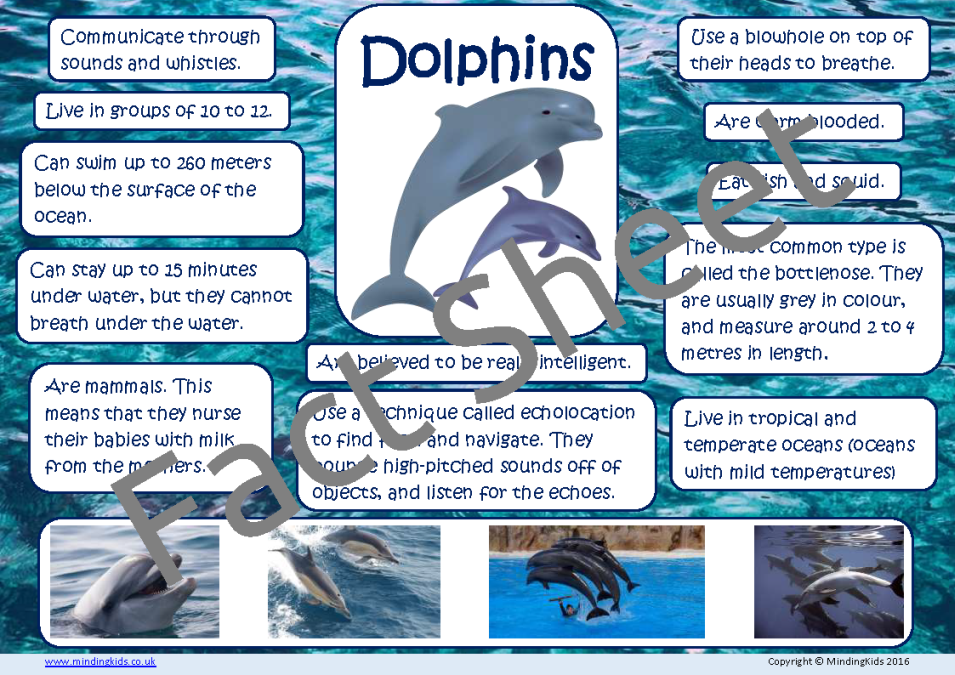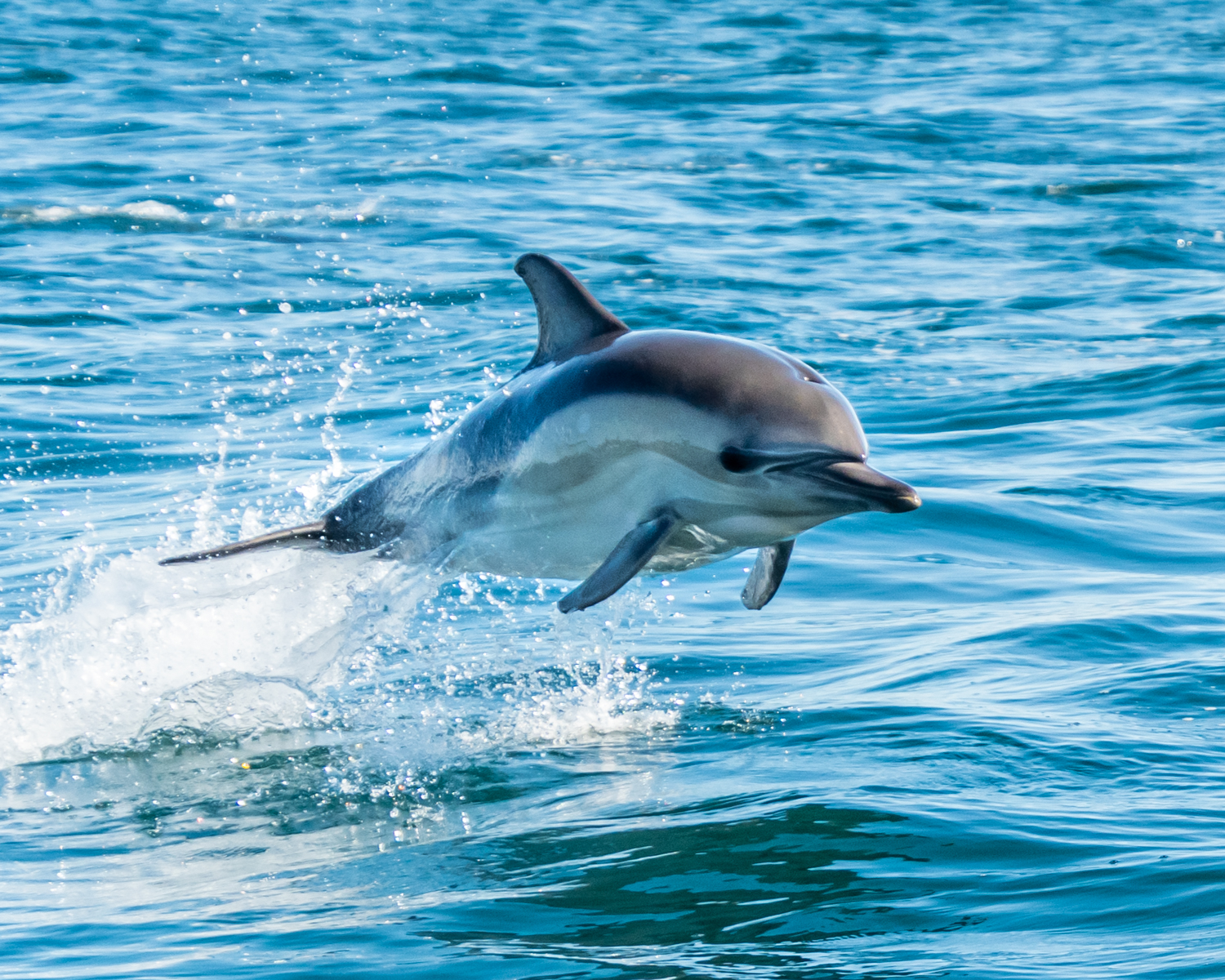Exactly How Dolphin Facts Showcase Their Relevance to Marine Biodiversity
Exactly How Dolphin Facts Showcase Their Relevance to Marine Biodiversity
Blog Article
Introduction Dolphin Details: Nature's Intelligent Marine Mammals
Dolphins, typically related to as one of the ocean's most smart residents, display a fascinating array of behaviors and social frameworks that necessitate closer exam. With over 40 unique types, these aquatic animals not only demonstrate impressive interaction abilities and complex social interactions however likewise possess sophisticated cognitive abilities that test our understanding of non-human knowledge.
Dolphin Types Variety
Dolphins are a diverse group of aquatic mammals belonging to the family members Delphinidae, which includes over 40 unique species. This family members consists of widely known species such as the typical bottlenose dolphin (Tursiops truncatus), the whale or killer whale (Orcinus orca), and the risso's dolphin (Grampus griseus) Each types displays unique physical attributes, behaviors, and adaptations that enable them to grow in different marine atmospheres.
Dolphin species vary considerably in dimension, ranging from the tiny Maui's dolphin (Cephalorhynchus hectori) at approximately 1.2 meters to the whale, which can reach sizes of as much as 9 meters. Their coloration also varies, with some types showing striking patterns that aid with camouflage or social signaling. Additionally, dolphins inhabit varied environments, from seaside regions and tidewaters to the open sea, showcasing their versatility.
Research right into dolphin varieties diversity highlights the ecological value of these mammals, as they play essential roles in marine ecological communities. Recognizing the various types is important for preservation initiatives, as numerous encounter dangers from habitat climate, air pollution, and loss modification, requiring targeted defense measures to guarantee their survival.
Social Structures and Behavior
The intricacy of dolphin varieties is mirrored in their detailed social frameworks and habits. Dolphins are known for their extremely social nature, commonly creating groups called shucks, which can vary from a couple of individuals to over a hundred. These vessels are generally composed of family participants, showcasing a matrilineal structure where ladies play a main role in keeping social bonds and nurturing children.

Furthermore, some types of dolphins, such as whales, demonstrate complicated social habits that can include sub-pods or clans with distinct social practices. These social frameworks are essential for the survival and wellness of dolphin populaces, as they promote interaction, participation, and the transmission of understanding across generations. Understanding these social characteristics is crucial for conservation efforts and the defense of their all-natural habitats.
Communication Techniques
Amongst the numerous methods of interaction, dolphins utilize a sophisticated selection of communication methods that help with social cohesion and coordination within their sheaths. These methods include vocalizations, body language, and echolocation, each offering unique functions in their social communications.
Dolphins create a large range of clicks, whistles, and pulsed sounds, which serve as their key singing communication. Each dolphin has an one-of-a-kind trademark whistle, similar to a name, that enables individuals to recognize one another even in large teams. These articulations can share numerous messages, such as informing others to risk or collaborating group movements throughout searching.
Along with articulations, body language plays a vital duty in dolphin communication. Dolphin postures, such as leaping, rotating, or also refined shifts in positioning, convey moods and intentions. Hostile display screens might deter rivals, while playful habits can boost social bonds - look at more info Dolphin Facts.
Echolocation, a biological sonar system, additional help in navigating and searching. By sending out sound waves and analyzing the returning echoes, dolphins can find victim and obstacles efficiently, showing their impressive flexibility in intricate marine settings. Jointly, see these communication methods underscore the elaborate social lives of dolphins, highlighting their knowledge in browsing their undersea globe.

Knowledge and Issue Addressing
Acknowledged for their advanced interaction abilities, dolphins also exhibit impressive knowledge and analytical capacities that additionally improve their social communications. Their cognitive capacities are shown by their ability to find out intricate jobs, comprehend abstract concepts, and adjust to numerous environmental obstacles. Research has shown that dolphins can fix intricate problems, showing not only their cognitive flexibility yet also their capacity for preparation and insight.
Dolphins usually participate in cooperative hunting methods, showcasing their capability to work as a natural system. This synergy calls for innovative analytical abilities, as they must evaluate their atmosphere, identify prospective victim, and collaborate their actions to accomplish an usual goal. In addition, dolphins have been observed using tools, such as marine sponges, to protect their snouts while foraging on the sea flooring, additional exemplifying their ingenious analytical abilities.

Human-Dolphin Communications
Human-dolphin interactions have mesmerized researchers and enthusiasts alike, highlighting the complex partnership in between these intelligent aquatic animals and humans. From ancient times, dolphins have actually been illustrated in art and mythology, representing harmony and knowledge (Dolphin Facts). Modern interactions range from scientific research study and conservation efforts to leisure activities like dolphin swimming and watching with dolphins
Study has shown that dolphins possess progressed social structures and interaction abilities, which promote their communications with humans. These encounters often promote emotional connections, with several people reporting feelings of pleasure and empathy during such experiences. It is important to approach these communications with care, as human tasks can interfere with dolphin behaviors and environments.
Preservation initiatives significantly concentrate on advertising accountable communications, making certain that human excitement does not compromise dolphin welfare. Education programs intend to elevate awareness regarding the environmental importance of dolphins, highlighting the demand for sustainable methods.
Verdict
In summary, dolphins exemplify amazing intelligence and versatility within diverse marine environments. Their complex social frameworks, progressed interaction approaches, and analytic abilities highlight the complexity of their habits. Human interactions with these aquatic mammals highlight the value of responsible conservation efforts to ensure their survival and the protection of their habitats. Continued study and understanding are vital for promoting a deeper understanding of dolphins and promoting their well-being in a progressively threatened ecosystem.
Dolphin types differ substantially in dimension, ranging from the small Maui's dolphin (Cephalorhynchus hectori) at about 1.2 meters to the whale, which can get to sizes of up to 9 meters. Dolphins display a selection of social interactions, consisting of grooming and physical contact, which serve to reinforce connections and establish hierarchies.
Recognized for their sophisticated interaction skills, dolphins additionally display amazing knowledge and analytical capabilities that additionally enhance their social communications. Modern communications vary from scientific research study and conservation efforts to entertainment tasks like dolphin watching and swimming with dolphins.
Study has shown that dolphins possess advanced social structures and communication skills, which facilitate their interactions with human beings.
Report this page